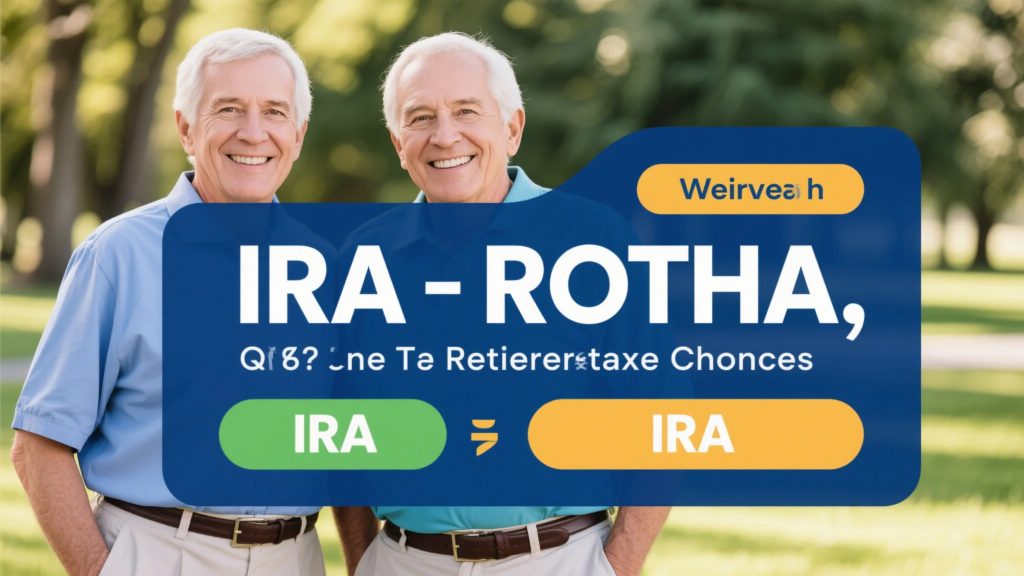
IRA vs Roth IRA: Which One Should You Choose?
Understanding the Fundamental Differences
The IRA vs Roth IRA decision represents one of the most important choices in retirement planning. Traditional IRAs offer immediate tax deductions on contributions but require paying taxes on withdrawals during retirement. Roth IRAs work inversely – contributions are made with after-tax dollars, but qualified withdrawals are completely tax-free. This fundamental difference shapes their suitability for different financial situations and life stages.
Current tax brackets play a significant role in determining which account makes more sense. Those expecting to be in a higher tax bracket during retirement typically benefit more from Roth accounts, while those anticipating lower retirement income might prefer traditional IRAs. However, tax laws can change unpredictably, making diversification across both account types a prudent strategy for many savers.
Tax Planning Considerations
Effective retirement tax strategies often involve balancing traditional and Roth accounts. Roth IRAs have income limits for direct contributions ($153,000 for single filers and $228,000 for married couples filing jointly in 2023), but high earners can use “backdoor” Roth conversions by making nondeductible traditional IRA contributions and then converting to Roth. This strategy requires careful tax planning due to the pro-rata rule.
Required Minimum Distributions (RMDs) represent another key difference. Traditional IRAs require withdrawals starting at age 73 (under current law), while Roth IRAs have no RMDs during the original owner’s lifetime. This makes Roth accounts particularly valuable for those who don’t need all their retirement savings immediately and want to preserve assets for heirs or charitable giving.

Navigating Account Transitions
Understanding retirement plan rollover options becomes crucial when consolidating accounts or changing jobs. Direct rollovers between similar account types avoid tax complications, while conversions from traditional to Roth accounts trigger taxable events. The optimal timing for Roth conversions often occurs during lower-income years, such as between retirement and starting Social Security or pension payments.
When considering rollovers, compare investment options, fees, and services between accounts. Some employer plans offer unique investment opportunities or institutional-class shares with lower expenses. IRAs typically provide broader investment choices but may have higher fees for certain transactions. The five-year rule for Roth accounts applies separately to each conversion, creating potential complications if not properly tracked.
Supplementing with Guaranteed Income
For those seeking stability in retirement, evaluating the best annuity plans for retirees can complement IRA strategies. Fixed annuities can provide predictable income streams similar to traditional pensions, while variable annuities offer growth potential with more risk. Immediate annuities convert lump sums into guaranteed payments, helping protect against longevity risk.
Annuities work particularly well when paired with Roth accounts. Using Roth funds to purchase an annuity creates tax-free income streams, while traditional IRA-funded annuities generate taxable payments. Deferred income annuities (DIAs) purchased earlier in retirement can provide “longevity insurance” that begins payments later in life, when other assets might be depleted.
Creating Sustainable Withdrawal Plans
Practical retirement income planning tips emphasize balancing various account types. The conventional 4% withdrawal rule may need adjustment based on account composition. Roth funds allow more flexible withdrawals since they don’t affect taxable income, helping manage Medicare premiums and Social Security taxation thresholds.
A balanced approach might involve using traditional IRA withdrawals to fill lower tax brackets, then switching to Roth funds for additional needs. This strategy minimizes lifetime taxes while maintaining flexibility. Health Savings Accounts (HSAs) can complement this approach by providing triple tax advantages for qualified medical expenses, which typically increase during retirement.
Estate Planning Implications
Roth IRAs offer significant advantages for legacy planning. Unlike traditional IRAs which create taxable income for beneficiaries, Roth accounts pass tax-free. The SECURE Act changed inherited retirement account rules, generally requiring most non-spouse beneficiaries to empty accounts within ten years, making Roth conversions more attractive for those wanting to leave tax-efficient inheritances.
Trusts can be named as IRA beneficiaries for control over asset distribution, but require careful drafting to avoid unintended tax consequences. “Conduit” trusts allow required distributions to pass through to beneficiaries, while “accumulation” trusts retain distributions but may push beneficiaries into higher tax brackets. Professional guidance is essential when coordinating retirement accounts with complex estate plans.
Adapting to Life Changes
Life events like marriage, divorce, or career changes can alter the optimal IRA strategy. Married couples can coordinate spousal IRA contributions even if one partner doesn’t have earned income. Divorce requires careful attention to QDROs (Qualified Domestic Relations Orders) when dividing retirement assets. Career changes might create opportunities for mega backdoor Roth strategies if the employer plan allows after-tax contributions.
Early retirees face special considerations regarding the Roth conversion ladder strategy – systematically converting traditional IRA funds to Roth accounts during low-income years to create accessible funds after five-year waiting periods. This approach requires meticulous planning but can provide tax-efficient access to retirement funds before age 59½ without penalties.
Market Volatility Management
Roth accounts offer unique advantages during market downturns. Since withdrawals are tax-free, retirees can adjust distributions based on portfolio performance without worrying about tax implications. Roth funds also provide flexibility to cover unexpected expenses without pushing taxable income into higher brackets that might affect Medicare premiums or Social Security taxation.
Maintaining liquidity across account types creates options during volatile periods. Having 1-3 years’ worth of expenses in cash or short-term bonds allows other investments time to recover before needing to sell. Roth contributions (but not earnings) can always be withdrawn penalty-free, providing another potential source of emergency funds if needed.


